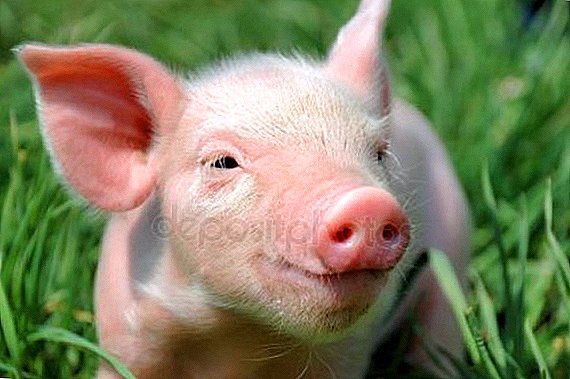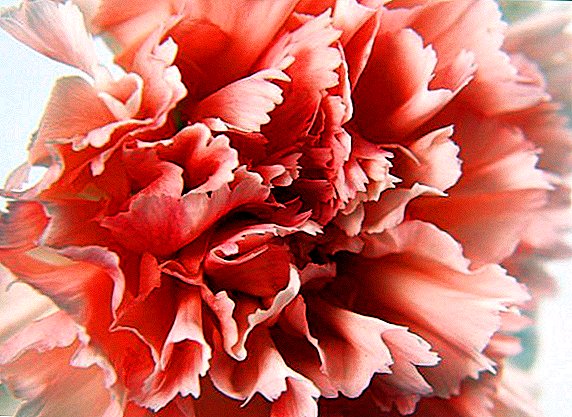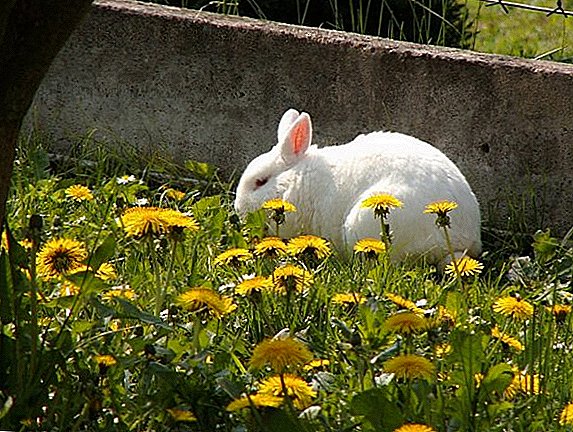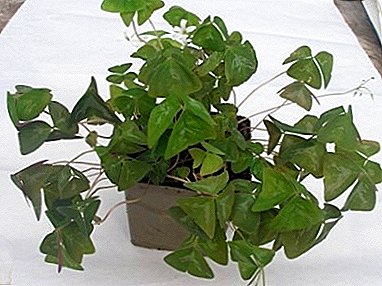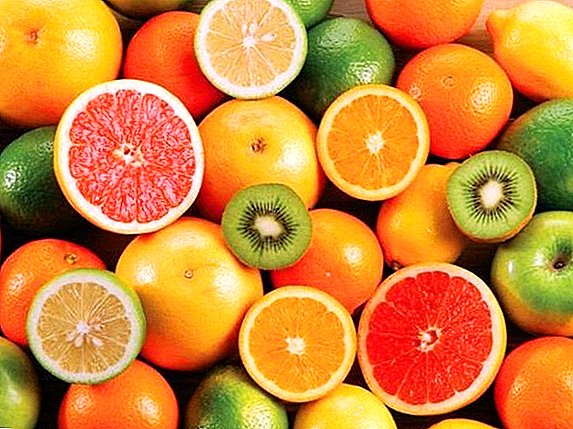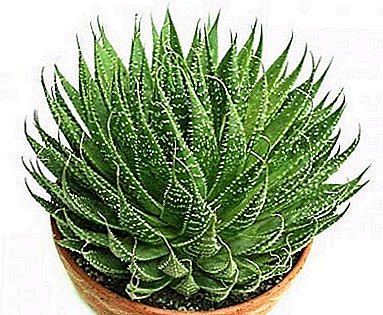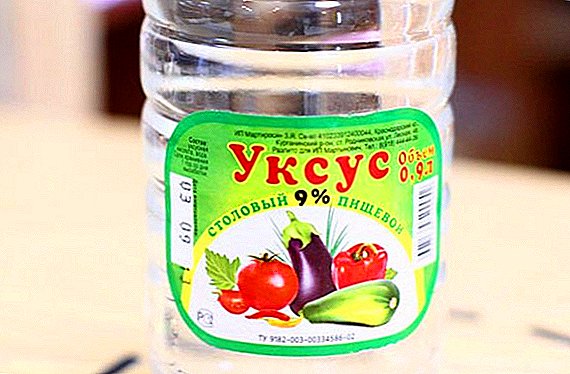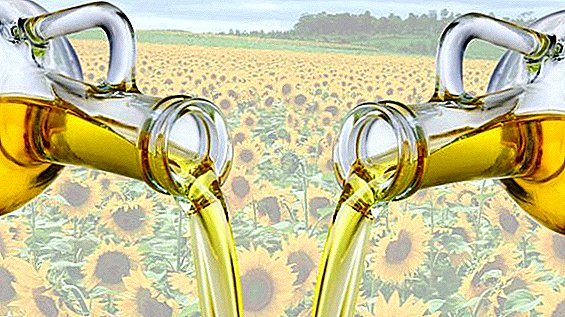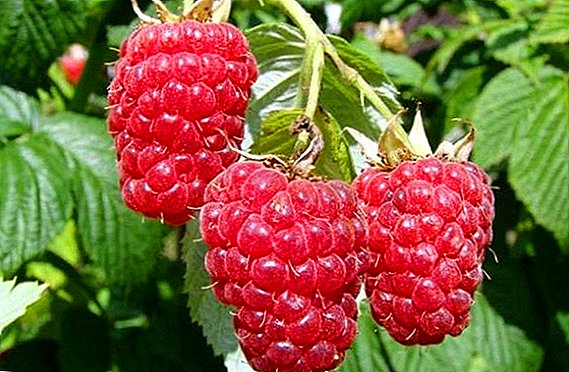 You always want to get a good harvest of raspberries from your plot. Therefore, it is necessary to choose a good variety and ensure proper care of the bushes.
You always want to get a good harvest of raspberries from your plot. Therefore, it is necessary to choose a good variety and ensure proper care of the bushes.
Variety Krasa Russia, according to gardeners, has proven itself. This type of raspberry and its planting will be discussed in this article.
Breeding history
This variety was brought out by Professor V. Kichin in 1990. In Moscow, Maroseika and Mirage varieties were crossed, the fruits of which were large and the yield was high.
Did you know? The leader in growing raspberries in the world market is Russia.Individually, these varieties did not reach a high score. But their hybrid Beauty of Russia received the highest rating.

Description and distinctive features of the variety
Consider the description of a variety of raspberry Krasa Russia.
Bushes
Bushes are sredneroslymi, grow from 1.5 to 2 m. They are compact. During the season about 10 new shoots and not less than 5 root offsprings appear on them. The stalks are strong, have a light down and a small wax coating.
There are no spikes on them. On the branches that bear fruit, there are many antennae. On average, about 20 berries ripen on each branch. The leaves are large, have a dark green color and a little shine. 
Fruit
The shape of the berries is similar to an elongated cone. They have a bright red or crimson hue. The fruits are large, their weight can be from 4 to 12 g, and the maximum size of a berry can be equal to a box of matches.
There is little seed in them. Raspberries are sweet, have dense and juicy flesh. The fruit has a raspberry flavor and aroma.
Check out such raspberry varieties as Novost Kuzmina, Meteor, Vera, Patricia, Yellow Giant, Lyachka, Atlant, Caramelka, Cumberland, Bryansk Divo, "Diamond".
Yield
Raspberry bears fruit in the second year after planting. If you take good care of the bushes and do not forget about feeding, then you can collect about 5 kg of berries from one plant. Young seedlings bear less fruit. 
What to look for when buying seedlings
Seedlings must be purchased in proven nurseries.
Quality planting material is:
- stems should be of medium thickness;
- seedling should have 2-3 mature shoots;
- the roots must be well developed and have many small processes;
- the plant should have a height of about 20 cm. Big bushes take root worse;
- there should be no traces of fungal diseases on the stems;
- leaves on a seedling may not be, since in the nursery they are removed to reduce evaporation of water;
- the cuts must be clean and even and not black and rot.
Important! When transporting seedlings after purchase, you must wrap the roots in a damp cloth. If the landing will be carried out in a few months, then planting material should be stuck to a depth of 40 cm.

Choosing the right place
To get a good harvest, it is necessary not only to choose high-quality seedlings, but also to choose the right place for raspberries.
Lighting
Raspberries need a large amount of sun, so the area should be well lit and without drafts.
The soil
It is best to plant raspberries in medium loam, where the soil is not greasy - then the bushes will not grow a lot of vegetative shoots. It is also necessary to pay attention to groundwater - they should not flow closer than 1.5 m to the surface of the earth.
Preparatory work
This culture prefers a large amount of humus in the soil. If the soil is clay, scatter about 2 buckets of humus and sand on 1 square meter on the surface and dig the ground on the bayonet of a shovel.
This is done 6 months before landing. It is also necessary to remove the roots of weeds. If woodlice, plantain, horse sorrel grew on this place, then the soil acidity is probably increased.  Raspberry won't like it. Therefore, under the digging it is recommended to add 500 g of lime, wood ash and dolomite flour per 1 square meter. About a month before planting you need to dig holes or trenches for seedlings.
Raspberry won't like it. Therefore, under the digging it is recommended to add 500 g of lime, wood ash and dolomite flour per 1 square meter. About a month before planting you need to dig holes or trenches for seedlings.
Stepwise landing process
Plant raspberries can be both in spring and autumn. For a trench or bush planting, it is necessary to adhere to the distance between plants of 0.5-0.7 m, and between rows should be left about 1.5 m.
Trenches can be excavated of any length, depending on the number of seedlings. If the bushes will be planted in the holes, then you need to dig holes 30x30 cm, 40 cm deep.
Under each bush should be added humus (1 bucket), superphosphate (100 g) and potassium sulfate (75 g). Fertilizers mix with the ground and fill up the pits to half, water and condense.
Remove damaged roots from seedlings. They are then placed in the wells or in a trench so that the root collar does not deepen and is not too high above the ground. After that, the bushes bury and tamp the ground so that there are no air voids. Long plants are cut to 0.3 m. Then, raspberries should be watered using about 5 liters of water for each bush. Next, the ground is mulched with peat or humus layer of at least 5 cm.
Competent care - the key to a good harvest
A good harvest of raspberries can be expected only with quality care for the bushes.
Watering and mulching
Water the plants should be abundant, so that the top layer of earth in 30 cm is well moistened. Young bushes are watered more often. From the end of May until the beginning of ripening, the plants need to be moistened 1-2 times a week.
Important! It is recommended to water under the root so that the water does not fall on the leaves, otherwise the bushes can get sick and the fruits rot.
At the end of October, abundant water recharge irrigation is recommended - 5-6 buckets of water are used per 1 square meter.  So that the moisture evaporates less and the earth crusts do not form, the soil around the bushes should be mulched with peat or rotted grass.
So that the moisture evaporates less and the earth crusts do not form, the soil around the bushes should be mulched with peat or rotted grass.
Top dressing
The first 2-3 years after planting, it is important to fertilize the Beauty of Russia, as the roots are actively formed. Raspberries need nitrogen, so after the snow melts it is necessary to add urea (about 8 tablespoons per 1 square meter).
In the autumn it will be useful to bring 1-2 buckets of non-liquid manure for each bush. Also, raspberries in the first 3 years of life need potash fertilizers - 1-2 tablespoons are used per 1 square meter. l potassium sulfate.
With 4 years of life limited to humus, making it in the fall under the bushes a layer of 5-10 cm
Every 4 years it is necessary to feed raspberries with complex fertilizers, which include microelements. Do it after harvesting. Top dressing needs to be combined with watering.
Preventive treatment
For diseases of raspberries need to spray Bordeaux liquid or Nitrafenom. Plants need treatment and the soil beneath them. This procedure is carried out in the spring.
After harvesting, you need to spray the raspberries with the same drugs to destroy the pathogens that could appear in the summer.
From pests need to use Actellic or Karbofos. This is done in the spring, before bud break. Also after harvesting is carried out prevention with the use of the same drugs.
Support
Considered variety is large-fruited, because of which the branches can sag from the severity of the berries. Therefore, install the support in the form of a trellis. With the help of a string or wire, the bushes are tied to them at a height of 0.7 and 1.5 m.
Did you know? In 1893, in Geneva, for the first time, artificially crossed the black and red raspberries and got the purple variety.

Pruning
To ensure the culture of health and get a good harvest, raspberries need to be cut. 5-7 shoots should be left, and the rest removed. Make it a sharp tool.
In the autumn period, pruned damaged, diseased and broken branches, and in the spring - shoots that were damaged by snow and cold.
Wintering
The frost resistance of this variety is average - Russian Beauty can withstand temperatures as low as -30 ° C. If snow often falls in winter, the bushes feel good.
Learn how to properly prepare raspberries for winter.And if there is little snow, then the plants need shelter. In late September, you should bend young branches to the ground and cover their tops with earth. They can also be tied up so that they do not straighten.
Next, the bushes are covered with bags, spruce branches or boards. Covering raspberries when warm days are over and before the frosts come. If this is done earlier, then the shoots can melt.  And if you do not have time to cold, then the branches become brittle and damaged. With the quality and proper care of raspberry bushes, the variety Krasa Russia will thank you for its high yield and large fruits.
And if you do not have time to cold, then the branches become brittle and damaged. With the quality and proper care of raspberry bushes, the variety Krasa Russia will thank you for its high yield and large fruits.


